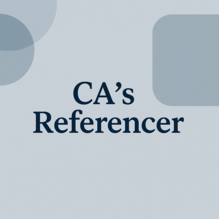EPF taxation rules explained:
Do you need to pay income tax if you withdraw your Employees' Provident Fund before 5 years of service?
Nov 12, 2025
Synopsis
EPF withdrawals are generally tax-free after five years of service. However, withdrawals before this period may attract tax. Certain conditions allow for tax-free withdrawals even with less than five years of service. Transferring EPF to a new account is advised for members leaving employment before completing five years.
EPF withdrawal options have been revised, allowing members to withdraw their balances for various reasons . But is every withdrawal tax free? EPF is one of the few schemes that offers a tax-free corpus on withdrawal of the maturity amount if the holding period is more than 5 years. However, if you have held it for less than 5 years, the withdrawal is taxable under specific conditions. So, what are those specific conditions, and can an EPF subscriber dodge that tax?
Chartered accountant Akshay Jain, Direct Tax Partner, NPV& Associates LLP, and Pankaj Savla, Head, Labour Law, NPV& Associates LLP, explain EPF tax rules along with eligibility criteria for EPF withdrawals.
But let’s first take a look at the tax benefits that EPF offers its subscribers.
EPF tax benefits
EPF falls under the exempt-exempt-exempt category, where the contribution, interest and maturity amount all are tax-free.
Under the old tax regime, up to Rs 1.50 lakh deposits in EPF in a financial year qualify for tax benefits under Section 80C of the Income Tax Act, 1961.
In the new tax regime, the tax deduction benefit is applicable only to the employer’s contribution to the employee's EPF account, capped at 12% of the basic pay and DA.
Both the interest earned and the maturity amount are tax-free under both the old and new tax regimes, provided the EPF investment is held for more than 5 years.
What are the eligibility criteria for EPF withdrawal?
As per EPF scheme, a member can withdraw the full accumulation of EPF contribution on:
a. Retirement of service after reaching the age of 55 years.
b. On retirement on account of permanent or total incapacity for work.
c. Immediately before migration from India for permanent settlement abroad.
d. On termination of service on account of mass or individual retrenchment.
e. On voluntary retirement.
When can an EPF subscriber withdraw the full EPF corpus?
A member can withdraw the full accumulation only after completing 2 months of service immediately preceding the date on which the member makes application for withdrawal. The conditions are –
a. Where a factory or other establishment is closed and employees are transferred to an uncovered establishment.
b. Where the service of a member is terminated and he has been given a retrenchment compensation under the Industrial Dispute Act.
c. On cessation of employment, provided the member has not taken up employment in any factory or establishment to which the EPF Act applies.
What will be the taxation if an EPF subscriber withdraws his corpus before 5 years of service?
If a member has not completed 5 years, EPFO usually deducts TDS at the rate of 10% (if PAN is provided) on the contribution made by both the employer and the employee plus the interest on that. If there is no PAN, TDS at the rate of 34.608% is deducted.
No TDS shall be deducted in the following cases:-
a. Transfer of PF from one account to another PF account.
b. Termination of service due to ill health of member/discontinuation of business by employer/completion of project/other cause beyond the control of member.
c. If an employee withdraws PF after a period of 5 years.
d. If the PF payment is less than Rs 50,000/- but the member has rendered service of less than 5 years.
e. If an employee withdraws an amount more than or equal to Rs 50,000 with service less than 5 years but submits Form 15G/15H along with their PAN
How will 5 years of service be counted?
While computing the period of continuous service, the period or periods of continuous service rendered under the former employer(s) is counted.
What will be the tax if service years are more than 5 years but with gaps such as the employee falling ill/being terminated/or there being reasons beyond the employee's control?
Para 2(e) of the EPF Scheme defines continuous service as uninterrupted service and includes service which is interrupted by sickness, accident, authorised leave, a strike which is not illegal or cessation of work not due to the employee's fault.
Considering the above definition the service interrupted (gap) for the reasons mentioned herein above will be considered as continuous service and will not be taxable.
Are there some ways of avoiding TDS on withdrawal if service years are less than 5?
There is no way to avoid TDS on withdrawal. However, the experts suggest that, in the event of cessation of employment before completing 5 years of continuous service, it is advisable that an EPF member transfers the PF accumulation to the present PF account number and withdraws the amount only if he has completed 5 years of continuous service.
[The Economic Times]


